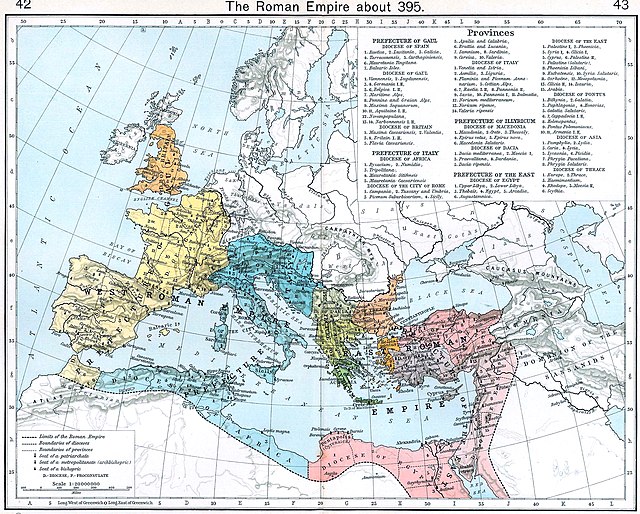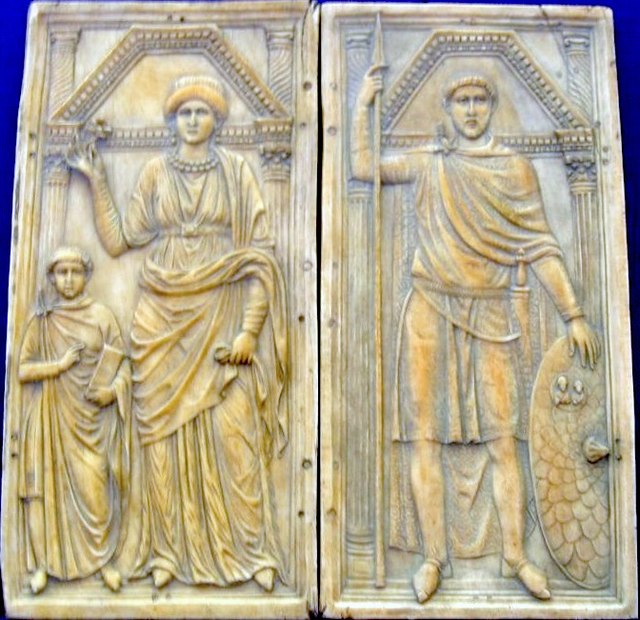The Sack of Rome on 24 August 410 AD was undertaken by the Visigoths led by their king, Alaric. At that time, Rome was no longer the administrative capital of the Western Roman Empire, having been replaced in that position first by Mediolanum in 286 and then by Ravenna in 402. Nevertheless, the city of Rome retained a paramount position as "the eternal city" and a spiritual center of the Empire. This was the first time in almost 800 years that Rome had fallen to a foreign enemy, and the sack was a major shock to contemporaries, friends and foes of the Empire alike.
The Sack of Rome in 410 by the Barbarians by Joseph-Noël Sylvestre, 1890
The administrative divisions of the Roman Empire in 395, under Theodosius I
Ivory diptych of Stilicho (right) with his wife Serena and son Eucherius, ca. 395
The Sack of Rome by Évariste Vital Luminais (1821–1896). New York, Sherpherd Gallery.
The Visigoths were a Germanic people united under the rule of a king and living within the Roman Empire during late antiquity. The Visigoths first appeared in the Balkans, as a Roman-allied barbarian military group united under the command of Alaric I. Their exact origins are believed to have been diverse but they probably included many descendants of the Thervingi who had moved into the Roman Empire beginning in 376 and had played a major role in defeating the Romans at the Battle of Adrianople in 378. Relations between the Romans and Alaric's Visigoths varied, with the two groups making treaties when convenient, and warring with one another when not. Under Alaric, the Visigoths invaded Italy and sacked Rome in August 410.
The eagles represented on these fibulae from the 6th century, and found in Tierra de Barros (Badajoz), were a popular symbol among the Goths in Spain.
Detail of the votive crown of Recceswinth from the Treasure of Guarrazar (Toledo, Spain), hanging in Madrid. The hanging letters spell [R]ECCESVINTHVS REX OFFERET [King R. offers this].
Gutthiuda[citation needed]
Migrations of the main column of the Visigoths






![Detail of the votive crown of Recceswinth from the Treasure of Guarrazar (Toledo, Spain), hanging in Madrid. The hanging letters spell [R]ECCESVINTHVS](https://upload.wikimedia.org/wikipedia/commons/thumb/f/f2/Corona_de_%2829049230050%29.jpg/287px-Corona_de_%2829049230050%29.jpg)
![Gutthiuda[citation needed]](https://upload.wikimedia.org/wikipedia/commons/thumb/a/a6/Gutthiuda.jpg/640px-Gutthiuda.jpg)
